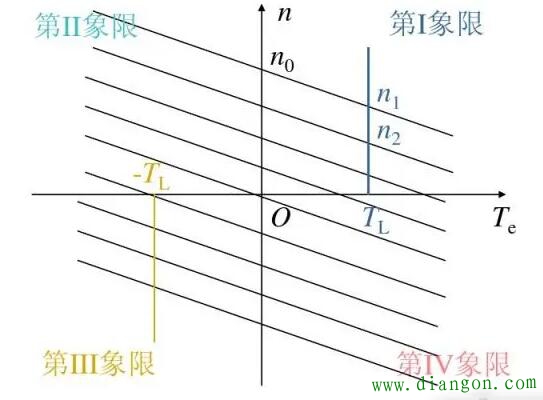I believe that many people engaged in transmission should understand that the solution and analysis of the motor’s working quadrant is helpful to the daily debugging work or problem solving.
Let’s take a picture first:

Now we understand this content together, the motor work quadrant:
As can be seen from the above figure, the motor has four quadrants. When does the motor work in which quadrant?
In the first quadrant, the speed and torque of the motor are both positive, and it is working in a forward electric state at this time;
In the second quadrant, the speed of the motor is positive, and the torque is negative. At this time, it is working in a positive forwarding state;
In the third quadrant, the speed and torque of the motor are both negative, and the work is in the reverse electric state at this time;
In the fourth quadrant, the speed of the motor is negative and the torque is positive. At this time, it works in the state of reverse power generation.
What is the use of understanding these?
First of all, whether the inverter selection is suitable for some motor working occasions.
1. If the motor of a certain equipment has been in the second and fourth quadrants for a long time, can our ordinary two-quadrant inverters meet the working conditions? If it is not satisfied, how to solve it?
2. When the motor brakes in the forward rotation, at which quadrant the motor is working, the inverter driving the motor often gives an alarm, such as the DC bus voltage is too high, how to solve it?
Therefore, the analysis of which quadrant the motor works in helps us to better design the electrical control and solve the problems that may be faced in advance.
Because some motors have been working in the second and fourth quadrants for a long time, when designing and manufacturing inverters, two types of power supply designers are provided to choose from. Quadrant inverter, such as Siemens PM250. If faced with this kind of working conditions, based on the above knowledge, we will understand that we need to choose a four-quadrant inverter to deal with it.
However, in many occasions, the motor is in the state of generating electricity during the braking process. At this time, the motor is equivalent to a generator, and the electric energy is fed back to the inverter and reaches the two ends of the DC bus. According to the basic principle of the inverter, at this time The capacitor on the DC wire starts to charge, but once the capacitor cannot be consumed and the feedback voltage is higher than the bus threshold, the inverter will alarm. The DC bus voltage is too high, how to solve it? At this time, we can increase the braking Resistor and consume it through its work, which is why some occasions need to increase the purpose of the braking resistor.
Regarding the analysis of the working quadrant of the motor, going deeper can find solutions to many problems, such as hoisting, hoisting, hoisting and other equipment if not analyzed, it will cause major safety problems. I found that many colleagues encountered a lot of problems. It was because they ignored that the motor was in a certain quadrant at a certain time, which led to the problem of being overwhelmed. Friends who are interested can learn more about the motor in different working quadrants on Baidu. Theoretical knowledge related to state analysis.